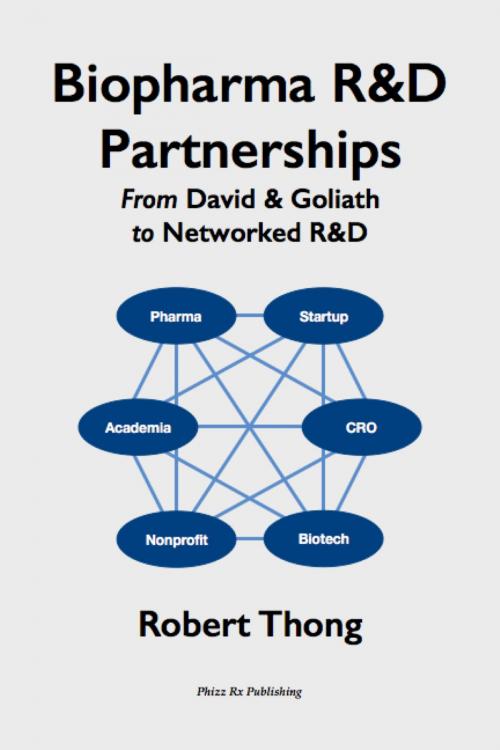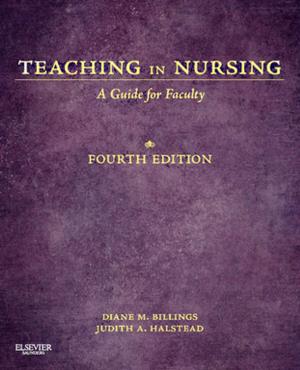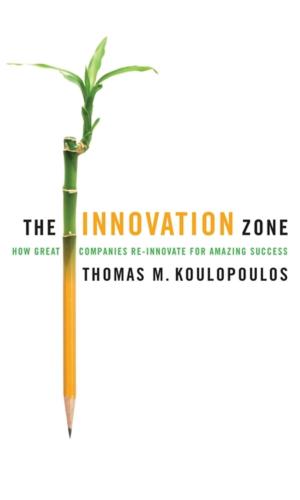Biopharma R&D Partnerships
From David & Goliath to Networked R&D
Nonfiction, Health & Well Being, Medical, Specialties, Pharmacy, Science & Nature, Science, Biological Sciences, Biotechnology, Business & Finance, Management & Leadership, Management| Author: | Robert Thong | ISBN: | 9780993518126 |
| Publisher: | Phizz Rx Publishing | Publication: | January 25, 2016 |
| Imprint: | Phizz Rx Publishing | Language: | English |
| Author: | Robert Thong |
| ISBN: | 9780993518126 |
| Publisher: | Phizz Rx Publishing |
| Publication: | January 25, 2016 |
| Imprint: | Phizz Rx Publishing |
| Language: | English |
The past decade has seen a massive paradigm shift in how new drugs and other therapies are discovered, developed and commercialized. This new distributed model of networked R&D seamlessly blends external partnerships with in-house efforts to generate innovations and create value. Smaller companies and academia have been both beneficiaries and targets of this shift in focus. Partnering with giant pharmaceutical corporations can provide the resources and channels to market that an academic laboratory or a small company simply does not have, but this approach also brings unexpected challenges and new demands.
This book is about asymmetric bilateral partnerships in biopharma R&D—David & Goliath arrangements in which one partner is a small organization (David) and the other a large company (Goliath). Going beyond the obvious scientific elements, we explore those factors that most influence the emergence of valuable outputs from such partnerships. In particular we will in many cases adopt the David perspective, focusing on issues and challenges of concern to the smaller partner in such arrangements. If these asymmetric collaborations are to deliver value for both sides, the Davids in these David & Goliath partnerships must come to grips with Goliath’s perspective and develop the practices and mindset to face these challenges head-on.
Over the next 12 chapters, we draw upon the partnering experiences and perspectives of more than forty different organizations that the author has either worked closely with or interviewed.
Chapter 1 describes how the large large pharmaceutical companies have transformed their R&D model to embrace externalization.
Chapter 2 describes the peculiarities that affect the dynamics of biopharma R&D projects. Chapter 3 introduces the important notions of execution risk, collaboration risk, and the collaboration tax, and explains the financial mechanisms typically used to share risk and return. Chapter 4 characterizes the different types of bilateral partnerships, outlines their distinctive features and highlights some key dos and don'ts. Chapter 5 describes the most commonly encountered collaborating organizations, looking at their strategic aims and business models, their rationale for R&D partnerships, and the values, culture, and other behavioral drivers in R&D partnerships.
Chapter 6 considers how organizations select partnerships, looks at how partnerships are jointly designed and negotiated and highlights common misconceptions in the subsequent due diligence process. Chapter 7 discusses the important considerations in designing how the project will be organized, conducted, and governed, and most importantly by whom. Chapter 8 concentrates on the execution phase, beginning with a close look at the honeymoon period at the outset. We then discuss the inevitable stage transitions during execution and look at the periodic maintenance actions for keeping a partnership working smoothly. Chapter 9 delves into the important role alliance managers play in David & Goliath partnerships—the processes they oversee, the tools they deploy and the problematic situations they are called upon to resolve. We also discusse what makes a good alliance manager.
Chapter 10 looks at the efforts of large multinational companies to upgrade their partnering-related activities by establishing corporate alliance management functions, institutionalizing alliance management processes, and scouting for innovations through relationship building and networking. Chapter 11 looks at the increasing role played by academia and nonprofit organizations in biopharma R&D, as llustrated by the growth of strategic industry-academic co-discovery alliances and nonprofit drug discovery organizations. Finally, Chapter 12 looks two alternative paths for building networked R&D organizations that excel at partnering.
The past decade has seen a massive paradigm shift in how new drugs and other therapies are discovered, developed and commercialized. This new distributed model of networked R&D seamlessly blends external partnerships with in-house efforts to generate innovations and create value. Smaller companies and academia have been both beneficiaries and targets of this shift in focus. Partnering with giant pharmaceutical corporations can provide the resources and channels to market that an academic laboratory or a small company simply does not have, but this approach also brings unexpected challenges and new demands.
This book is about asymmetric bilateral partnerships in biopharma R&D—David & Goliath arrangements in which one partner is a small organization (David) and the other a large company (Goliath). Going beyond the obvious scientific elements, we explore those factors that most influence the emergence of valuable outputs from such partnerships. In particular we will in many cases adopt the David perspective, focusing on issues and challenges of concern to the smaller partner in such arrangements. If these asymmetric collaborations are to deliver value for both sides, the Davids in these David & Goliath partnerships must come to grips with Goliath’s perspective and develop the practices and mindset to face these challenges head-on.
Over the next 12 chapters, we draw upon the partnering experiences and perspectives of more than forty different organizations that the author has either worked closely with or interviewed.
Chapter 1 describes how the large large pharmaceutical companies have transformed their R&D model to embrace externalization.
Chapter 2 describes the peculiarities that affect the dynamics of biopharma R&D projects. Chapter 3 introduces the important notions of execution risk, collaboration risk, and the collaboration tax, and explains the financial mechanisms typically used to share risk and return. Chapter 4 characterizes the different types of bilateral partnerships, outlines their distinctive features and highlights some key dos and don'ts. Chapter 5 describes the most commonly encountered collaborating organizations, looking at their strategic aims and business models, their rationale for R&D partnerships, and the values, culture, and other behavioral drivers in R&D partnerships.
Chapter 6 considers how organizations select partnerships, looks at how partnerships are jointly designed and negotiated and highlights common misconceptions in the subsequent due diligence process. Chapter 7 discusses the important considerations in designing how the project will be organized, conducted, and governed, and most importantly by whom. Chapter 8 concentrates on the execution phase, beginning with a close look at the honeymoon period at the outset. We then discuss the inevitable stage transitions during execution and look at the periodic maintenance actions for keeping a partnership working smoothly. Chapter 9 delves into the important role alliance managers play in David & Goliath partnerships—the processes they oversee, the tools they deploy and the problematic situations they are called upon to resolve. We also discusse what makes a good alliance manager.
Chapter 10 looks at the efforts of large multinational companies to upgrade their partnering-related activities by establishing corporate alliance management functions, institutionalizing alliance management processes, and scouting for innovations through relationship building and networking. Chapter 11 looks at the increasing role played by academia and nonprofit organizations in biopharma R&D, as llustrated by the growth of strategic industry-academic co-discovery alliances and nonprofit drug discovery organizations. Finally, Chapter 12 looks two alternative paths for building networked R&D organizations that excel at partnering.















